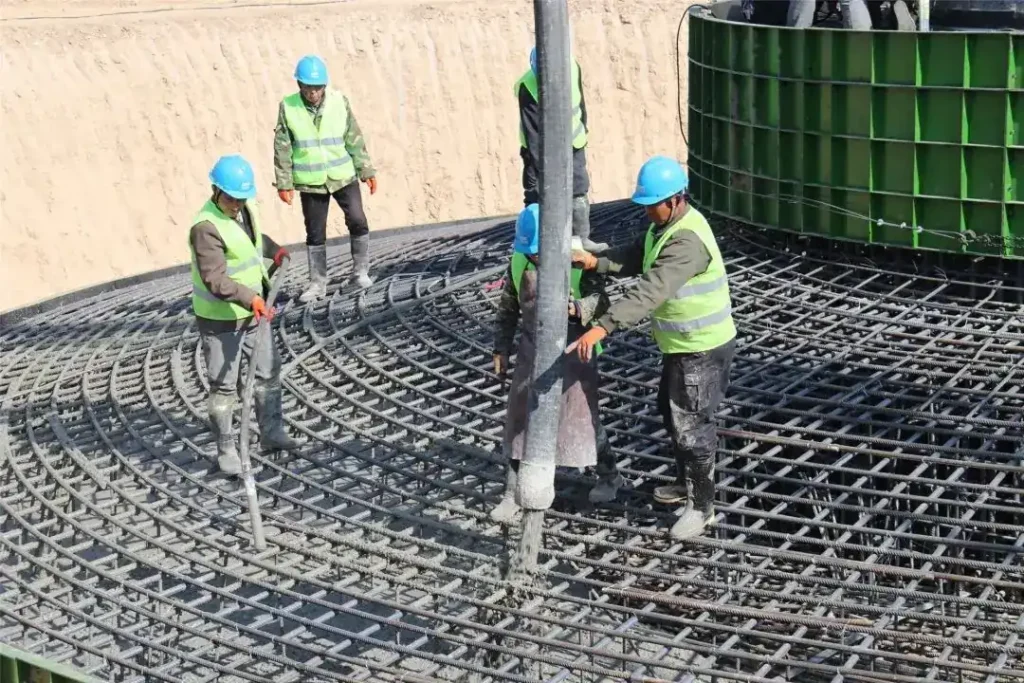Messi Biology explains that while concrete is the “cornerstone” of the construction industry, it has always faced an unavoidable inherent flaw: microcracks caused by temperature and drying shrinkage during the hardening process. These cracks can gradually erode structural stability and reduce durability, much like a vascular embolism. The emergence of admixtures has become key to solving this problem. Among the many admixture components, magnesium hydroxide is gradually becoming an essential material for high-end concrete preparation due to its three core advantages: flame retardancy, crack resistance, and environmental friendliness.

The Triple “Magic Effect” of Magnesium Hydroxide
1. Crack Resistance and Protection: The “Micro-Expansion Repairer” of Concrete
The anti-cracking magic of magnesium hydroxide stems from its unique crystal growth characteristics. As a hydration product of magnesium oxide expansive agents, it forms hexagonal plate-like crystals within the cement paste. Through “crystal growth pressure,” it expands the cement stone structure, precisely compensating for the volume shrinkage that occurs during the concrete hardening process. This delayed expansion characteristic is particularly crucial—it can match the full-cycle shrinkage of mass concrete, from hydration temperature rise to later-stage cooling. This avoids the shortcomings of traditional expansive agents, which often have “insufficient early expansion and excessive late expansion,” thereby protecting massive projects like dams and bridges from the threat of cracks.
2. Flame Retardant Barrier: A “Safety Shield” in Case of Fire
When exposed to temperatures above 340°C, magnesium hydroxide rapidly decomposes into magnesium oxide and water vapor. Each gram of this decomposition process can absorb 1.37 kJ of heat, quickly reducing the temperature in the combustion zone. The released water vapor dilutes the oxygen concentration, and the resulting magnesium oxide forms a dense protective layer that insulates against flames. Importantly, this process does not produce toxic gases such as hydrogen halides, completely solving the secondary pollution problem associated with traditional flame retardants. In an era of increasingly stringent building fire safety requirements, this characteristic of “extinguishing fire without adding to the chaos” is highly favored.
3. Performance Optimization: The “Structural Reinforcer” of Concrete
As an inorganic filler, the fine particles of magnesium hydroxide can improve the density of concrete and reduce its porosity, thereby enhancing its impermeability and wear resistance. Its excellent dispersibility also improves the fluidity of concrete, making construction more convenient while preventing structural unevenness caused by aggregate settlement.
The “Quality Code” of High-End Magnesium Hydroxide and Messi Biology’s Breakthrough
High-quality concrete places stringent demands on the purity, crystal structure, and environmental safety of magnesium hydroxide. According to the “HG/T 3607-2024 Industrial Magnesium Hydroxide” standard, products used for high-end admixtures must meet specifications such as a purity of ≥99% and impurities of ≤0.1%. Hebei Messi Biology Co., Ltd.’s products have achieved a significant breakthrough beyond these standards.
Relying on its independently developed production process, “Messi’s” magnesium hydroxide purity exceeds 99.8%, with harmful impurity content such as iron and calcium below 0.01%, far surpassing industry standards. This extreme purity prevents impurities from interfering with the expansion stability of the concrete, improving the precision of expansion rate control by 30%. Its unique nano-micro scale hexagonal plate-like crystal self-assembly structure results in a specific surface area of over 40m²/g. This allows for uniform dispersion in the concrete without layered sedimentation, significantly enhancing the compatibility between the admixture and the cement paste.
With the development of new building materials, the applications for magnesium hydroxide admixtures are continuously expanding: from the core tube concrete of super-high-rise buildings to the fire-resistant flooring of new energy plants, and the corrosion-resistant structures in marine engineering. The technological breakthroughs by companies like Hebei Messi Biology Co., Ltd. have not only broken the reliance on imports for high-end magnesium hydroxide but have also redefined the industry’s quality standards with a “Chinese standard.” This white powder, hidden within concrete, is using the power of technology to safeguard the safety and durability of buildings, becoming an indispensable “performance optimization master” in the era of green construction.
